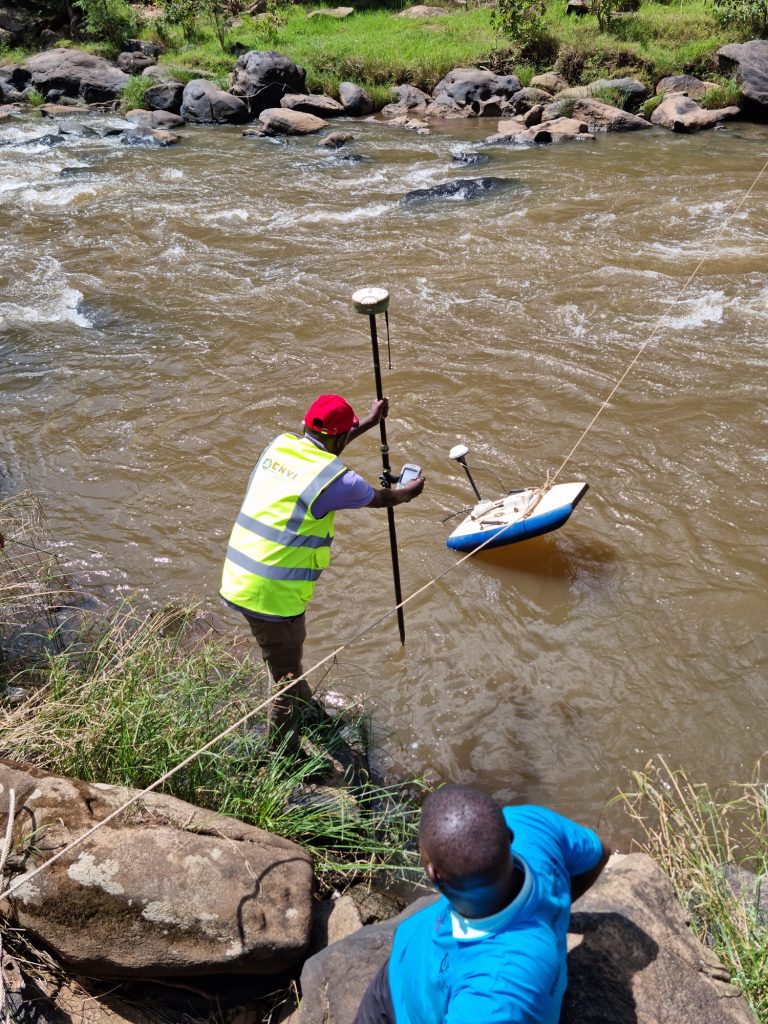
- Post-independence, Kenya and Tanzania have grappled with reconciling traditional land ownership systems with modern legal frameworks.
- Land conflicts have not only led to prolonged legal battles but, in some instances, have escalated to violent confrontations, displacing families and causing socio-economic disruptions.
- Every land transaction, when recorded on a blockchain, is visible to all parties involved, fostering trust and reducing fraudulent activities
Land rights, especially in nations like Kenya and Tanzania, have been a complex issue, deeply rooted in history and tradition. For a long time, going as far as the time they adopted their own land laws, there lacked a uniform system to manage land and land ownership. The emergence of blockchain technologies and NFTs (Non-Fungible Tokens) offer a promising solution to these challenges. This article delves into the intricacies of these technologies and how they can reshape the landscape of land rights in these nations.
The problems that come with land disputes
Land disputes in Kenya and Tanzania are not a new phenomenon. They have historical roots, often tied to colonial-era land acquisitions. Post-independence, these nations grappled with reconciling traditional land ownership systems with modern legal frameworks. The lack of clear land titles, overlapping land claims, and a failed centralized land registry have further exacerbated these disputes. These conflicts have not only led to prolonged legal battles but, in some instances, have escalated to violent confrontations, displacing families and causing socio-economic disruptions.
Introduction to Blockchain and NFTs
Blockchain is a decentralized ledger that records all transactions across a network. This technology ensures that data, once stored, remains immutable, preventing any form of tampering. NFTs, on the other hand, are unique digital tokens representing ownership of a specific item or piece of content on the blockchain. Unlike standard cryptocurrencies, NFTs are distinct and cannot be exchanged on a like-for-like basis. This uniqueness of NFTs makes them an ideal solution for representing land ownership digitally.
Read: Is the dip in cryptocurrencies the best way for African nations to adopt cryptocurrencies
Blockchain Technologies: A Beacon of Hope
The transparency offered by blockchain is its most significant advantage. Every land transaction, when recorded on a blockchain, is visible to all parties involved, fostering trust and reducing fraudulent activities. Moreover, blockchain eliminates the need for intermediaries, streamlining the transaction process, reducing costs, and minimizing corruption risks.
Tokenizing land assets using NFTs provides landowners with a digital certificate of their property. This digital representation is both unique and verifiable, reducing the chances of fraud. Platforms like Ethereum, with its smart contract functionality, Cardano, known for its sustainability and transparency, and Algorand, renowned for its efficiency, are leading the way in this revolution.
The Current State of Land Rights in Kenya and Tanzania
Land disputes in Kenya and Tanzania have historical roots, often tied to colonial-era land grabs. Post-independence, the challenge has been to reconcile traditional land ownership systems with modern legal frameworks. Today, land disputes arise from overlapping land claims, lack of clear land titles, and the absence of a centralized land registry.
Blockchain, NFTs, and the Future of Land Ownership
With blockchain, every land transaction is recorded on a public ledger, ensuring transparency. This can build trust among stakeholders, as they can verify transactions independently. Blockchain reduces the need for intermediaries such as brokers or agents. This not only speeds up the transaction process but also reduces costs and potential corruption.
Imagine owning a piece of land as a digital token. This is what NFTs can offer. By tokenizing land assets, owners can have a digital certificate of their land, which is both unique and verifiable. NFTs can reduce fraud, as each token is distinct and cannot be duplicated. They also offer a faster and more transparent way to transfer land ownership.
Ethereum’s smart contract functionality makes it a popular choice for tokenizing assets, including land. Cardano’s blockchain focuses on sustainability, scalability, and transparency, making it a suitable choice for land rights projects. Algorand offers a decentralized platform with fast transaction speeds and minimal fees, making it another excellent choice for land rights applications.
The fusion of NFTs and blockchain technologies offers a promising solution to the age-old land rights issues in Kenya and Tanzania. While challenges remain, especially in terms of adoption and integration with existing systems, the potential benefits in terms of transparency, efficiency, and trust are undeniable. As these technologies continue to evolve, they could very well redefine the landscape of land ownership in Africa.
The role of land departments
For blockchain and NFTs to be effectively integrated into the land rights system, the land departments in Kenya and Tanzania must take proactive steps:
- Education and Awareness: Land departments should conduct extensive awareness campaigns to educate the public about the benefits of blockchain and NFTs in land ownership.
- Collaboration with Tech Experts: Partnering with blockchain experts will ensure the correct implementation of the technology, tailored to the specific needs of the region.
- Updating Legal Frameworks: Existing land ownership laws might need revisions to accommodate and recognize digital land titles and transactions.
- Infrastructure Development: Adequate infrastructure, both in terms of technology and human resources, is crucial. This includes setting up digital land registries and training staff to manage and operate these systems.
- Pilot Projects: Before a full-scale rollout, pilot projects in select regions can help in understanding potential challenges and refining the approach.
Conclusion
The challenges of land disputes in Kenya and Tanzania are profound, but the fusion of NFTs and blockchain technologies offers a beacon of hope. While the road ahead is long and filled with challenges, the potential benefits in terms of transparency, efficiency, and trust are undeniable. With the right steps and collaboration between land departments, tech experts, and the community, the dream of a transparent and efficient land ownership system in these nations is achievable.
Read: The state of crypto and CBDC adoption in Tanzania
- SEO Powered Content & PR Distribution. Get Amplified Today.
- PlatoData.Network Vertical Generative Ai. Empower Yourself. Access Here.
- PlatoAiStream. Web3 Intelligence. Knowledge Amplified. Access Here.
- PlatoESG. Automotive / EVs, Carbon, CleanTech, Energy, Environment, Solar, Waste Management. Access Here.
- PlatoHealth. Biotech and Clinical Trials Intelligence. Access Here.
- ChartPrime. Elevate your Trading Game with ChartPrime. Access Here.
- BlockOffsets. Modernizing Environmental Offset Ownership. Access Here.
- Source: https://web3africa.news/2023/09/11/news/how-nfts-and-blockchain-technologies-are-revolutionizing-land-rights/
- :has
- :is
- :not
- $UP
- a
- About
- accommodate
- acquisitions
- across
- activities
- adopt
- adopted
- Adoption
- ADvantage
- africa
- African
- age-old
- agents
- ahead
- Algorand
- All
- All Transactions
- also
- among
- an
- and
- Another
- any
- applications
- approach
- ARE
- arise
- article
- AS
- Assets
- awareness
- basis
- battles
- BE
- beacon
- been
- before
- benefits
- BEST
- between
- blockchain
- blockchain experts
- blockchain technologies
- both
- brokers
- build
- build trust
- but
- by
- Campaigns
- CAN
- cannot
- Cardano
- causing
- CBDC
- CBDC adoption
- centralized
- certificate
- challenge
- challenges
- chances
- choice
- claims
- clear
- collaboration
- come
- community
- complex
- Conduct
- conflicts
- content
- continue
- contract
- correct
- Corruption
- Costs
- could
- crucial
- crypto
- cryptocurrencies
- Current
- Current state
- data
- decentralized
- decentralized platform
- departments
- Development
- digital
- digital certificate
- Digital token
- digital tokens
- digitally
- Dip
- disputes
- disruptions
- distinct
- dream
- each
- educate
- effectively
- efficiency
- efficient
- eliminates
- emergence
- ensure
- ensures
- ensuring
- especially
- ethereum
- Every
- evolve
- excellent
- exchanged
- existing
- experts
- extensive
- Failed
- families
- far
- FAST
- faster
- Fees
- filled
- focuses
- For
- form
- fostering
- frameworks
- fraud
- fraudulent
- from
- full-scale
- functionality
- further
- fusion
- future
- going
- hand
- Have
- help
- historical
- history
- hope
- How
- HTTPS
- human
- Human Resources
- ideal
- immutable
- implementation
- in
- includes
- Including
- independently
- Infrastructure
- integrated
- integration
- intermediaries
- into
- intricacies
- involved
- issue
- issues
- IT
- ITS
- jpg
- kenya
- known
- Lack
- Land
- landowners
- landscape
- Laws
- leading
- Led
- Ledger
- Legal
- like
- Long
- long time
- MAKES
- Making
- manage
- might
- minimal
- minimizing
- Modern
- more
- Moreover
- most
- must
- Nations
- Need
- needs
- network
- New
- NFTs
- non-fungible
- non-fungible tokens
- of
- offer
- offered
- Offers
- often
- on
- once
- only
- operate
- or
- Other
- own
- owners
- ownership
- parties
- partnering
- phenomenon
- piece
- pilot
- Pilot projects
- platform
- Platforms
- plato
- Plato Data Intelligence
- PlatoData
- Popular
- potential
- preventing
- Proactive
- problems
- process
- profound
- projects
- promising
- property
- provides
- public
- recognize
- reconciling
- recorded
- records
- redefine
- reduce
- reduces
- reducing
- refining
- region
- regions
- registries
- registry
- remain
- remains
- Renowned
- representation
- representing
- reshape
- Resources
- revisions
- Revolution
- right
- rights
- risks
- road
- Role
- rollout
- roots
- Scalability
- setting
- should
- significant
- smart
- smart contract
- solution
- some
- specific
- speeds
- Staff
- stakeholders
- standard
- State
- Steps
- stored
- streamlining
- such
- suitable
- Sustainability
- system
- Systems
- tailored
- Take
- tech
- Technologies
- Technology
- terms
- that
- The
- The Future
- The Landscape
- their
- Them
- There.
- These
- they
- this
- Tied
- time
- titles
- to
- today
- token
- tokenizing
- Tokens
- tradition
- traditional
- Training
- transaction
- transaction speeds
- Transactions
- transfer
- Transparency
- transparent
- Trust
- undeniable
- understanding
- unique
- uniqueness
- unlike
- using
- verifiable
- verify
- very
- visible
- Way..
- WELL
- What
- when
- which
- while
- will
- with
- zephyrnet













